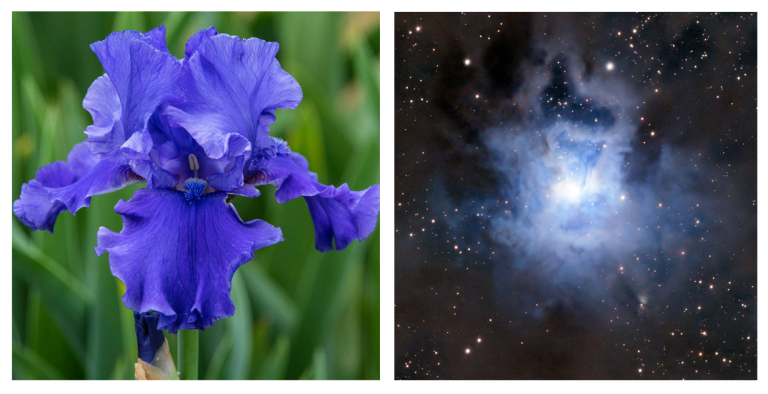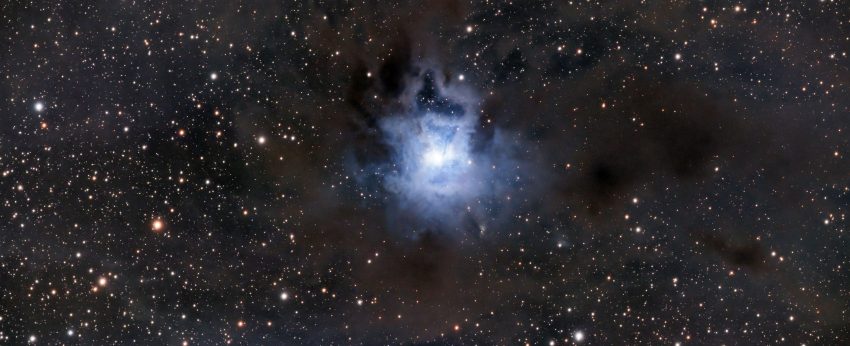Looking at the photo of this unique object, it is easy to understand where its name comes from. Both the color and shape of the nebula resemble the flower known and popular all over the world – Iris.

NGC7023 is a reflection nebula which lies about 1,400 light years away in the cosmic dust-obscured region of the Milky Way in the constellation of Cepheus . At the center of the nebula is the bright young star HD200775, the strong blue light of which is reflected from cosmic dust clouds, illuminating the region in a very attractive way. The size of the nebula is estimated to be 6 light years. On a cosmic scale it may not be much, but on our human scale it is still a huge distance – light takes 6 years to travel between the nebula opposite ends.
AstroBin: https://astrob.in/pt4jms/0/
We can see the nebula even through a small telescope pointing it north at 70 * above the horizon (RA 21h 01m 35,6s DEC +68° 10′ 10″). At this time of the year, due to the high altitude of the object in the sky and limited negative influence of the atmosphere, it is an ideal object for observation or photography.
I collected the material for several nights between the end of August and the beginning of September from my backyard in the city. They are not ideal conditions due to the light pollution which comes from street lighting which illuminates the surrounding area and has a negative impact on the quality of the final image. The telescope tracking the stars catches not only photons coming from space but also collect light from my surroundings at different intensities, which results in complex gradients of light on individual frames. To some extent, it can be dealt with at the post-processing stage, but some things are just insurmountable, so the comfort of working under dark skies cannot be overestimated.
Technical parameters of the photo:
- TSAPO 130/910 mm telescope with QHY268M cammera (PH mode, Gain 26, Offset 30)
- Photo on LRGB channels (L 65 x 120s; R 49 x 300s; G 38 x 300s; B 49 x 300s)
- The total exposure time is 13.5 hours
- BIAS, DARK and FLAT calibration frames of 20 frames per channel
- Material to be processed quantitatively: Light Frames – 10.5 Gb, calibration frames – 7.3 Gb
Clear Sky !!!

Great Imaging from a very bright neighborhood. Nice processing also.
Thank you very much. In such conditions (bortle 7) Astronomik filters are perfect, especially CLSCCD as luminance.
That is a great image, just seen it on SGL so nice to see your Blog as well.
Your setup not too far from mine (Esprit 100ED + QHY268M ) so shows me what is possible even with some light pollution.
Steve (teoria_del_big_bang on SGL)
Thank you Steve, as I mentioned in above comment Astronomik CLSCCD do the grate job (improve contrast and details). I hope you will get NGC7023 soon as well. I wish you clear sky!
Wow! I captured it in a bortle five but lost the files. I only have a partially processed one, but it’s such a beautiful nebula it doesn’t matter.